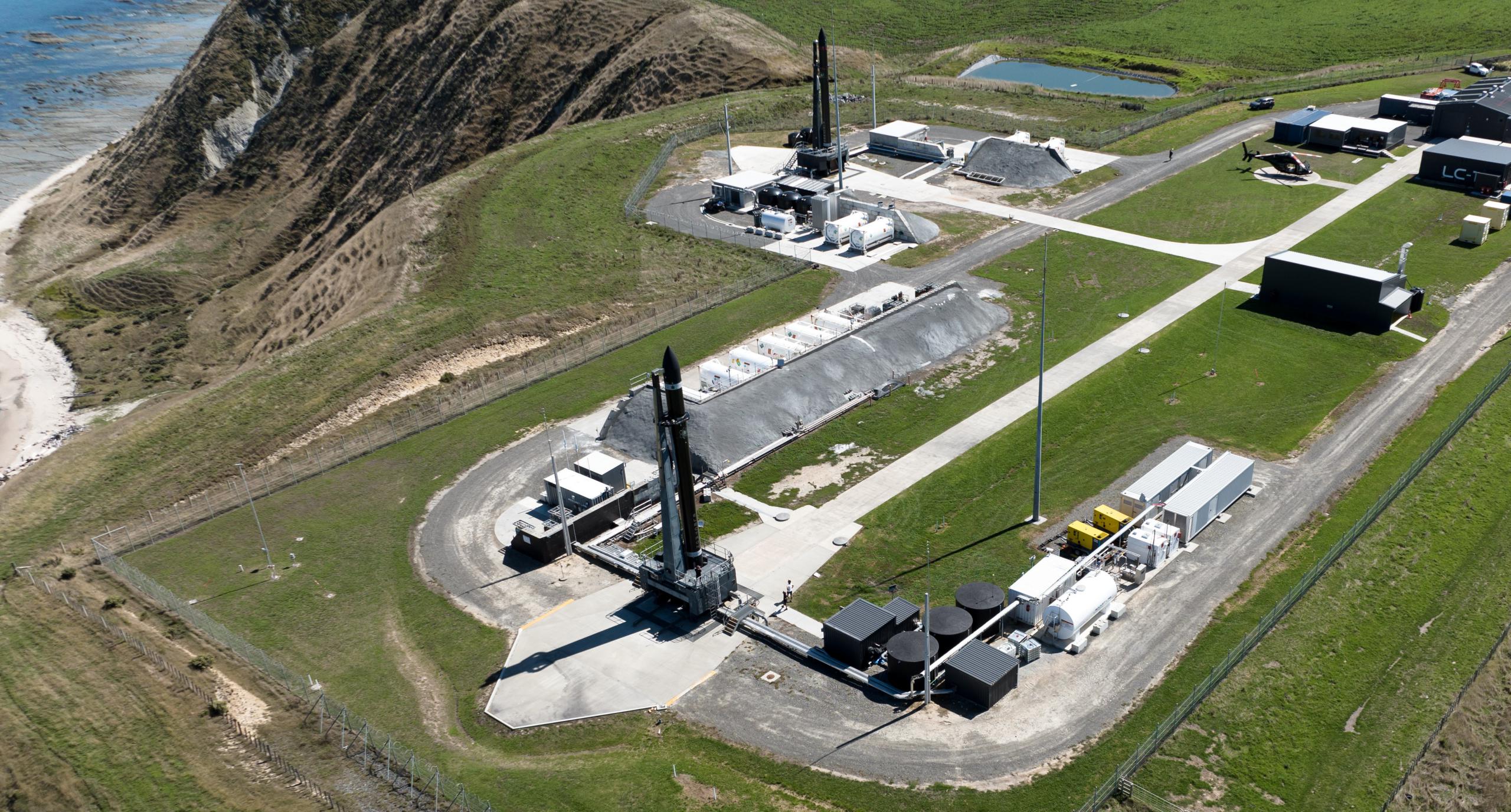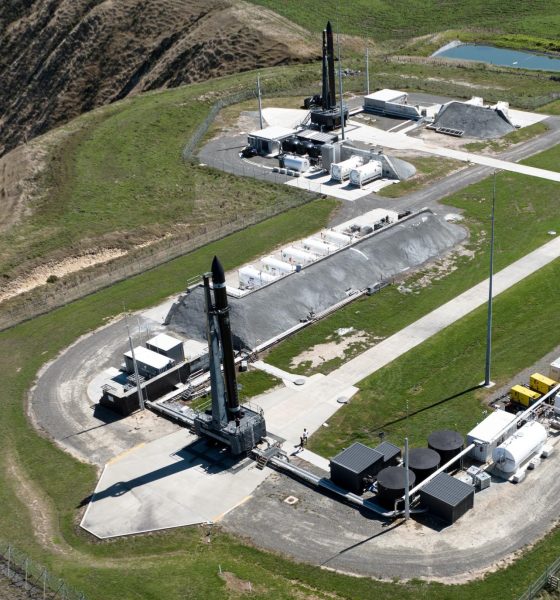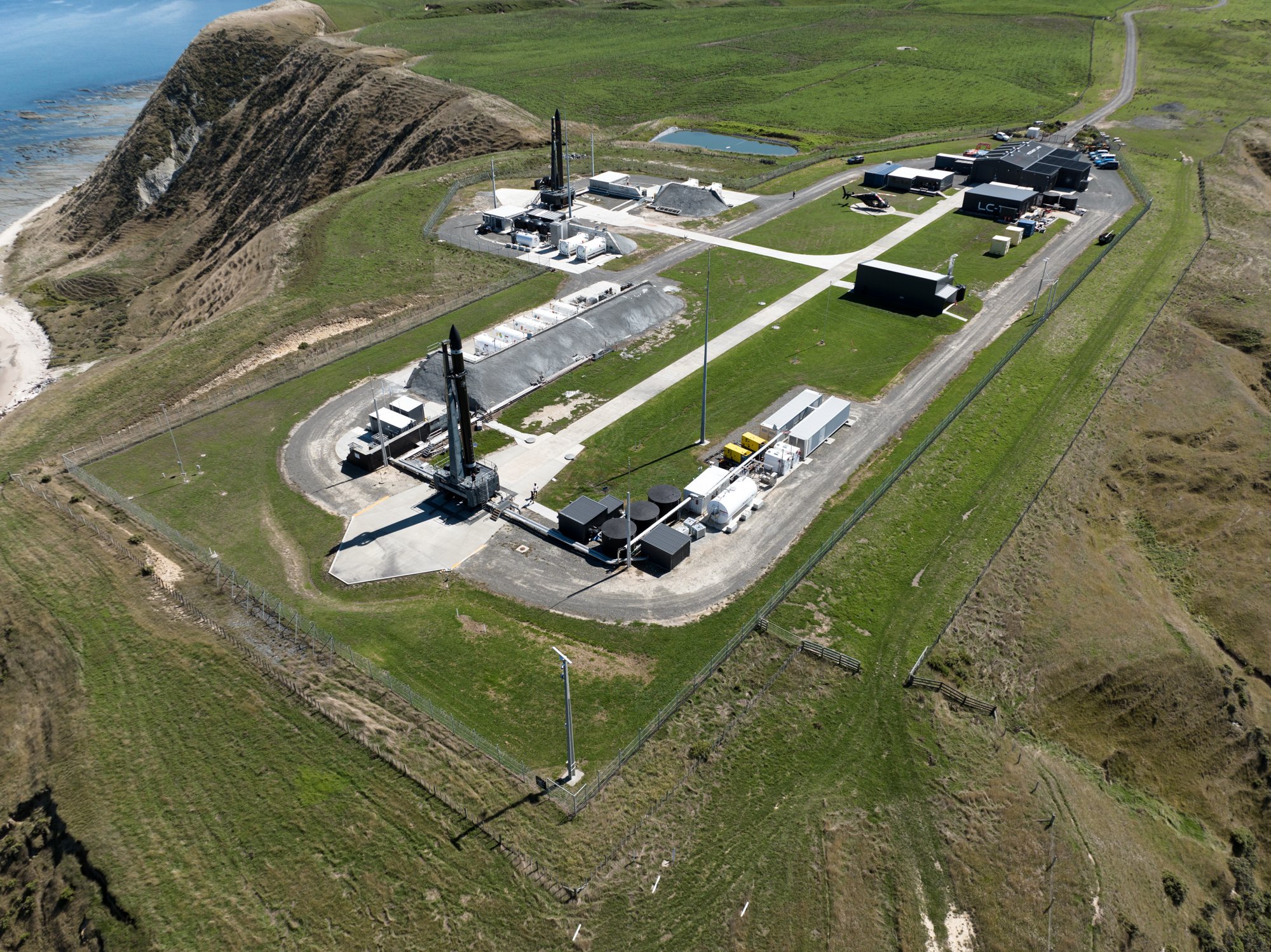

News
Rocket Lab to debut second New Zealand launch pad with first launch of 2022
Rocket Lab, a California-based aerospace company, recently announced the completion of a second launch pad at its primary New Zealand launch facilities.
In a last-minute change, Pad B (LC-1B), whose completion was announced on February 23rd, is scheduled to host both its first mission and Rocket Lab’s first Electron launch of 2022 no earlier than (NET) February 28th. The new pad is now the second to be constructed at Launch Complex 1 (LC-1), an exceptionally remote site located at the tip of northern New Zealand’s Mahia Peninsula. Aside from being the world’s first fully private orbital launch site, LC-1B’s completion makes it the third launch site built by Rocket Lab, including a yet unused pad at NASA’s Wallops Flight Facility on the East coast of Virginia. All three locations are exclusively designed to support the company’s small Electron rocket.
With the addition of Pad B, Rocket Lab hopes to drastically increase its launch cadence. Rocket Lab founder and CEO Peter Beck says that the company’s “ ability to launch and our launch cadence is essentially doubled by having an additional pad” at LC-1. What once started as an empty green field on the peninsula of New Zealand has grown into two orbital launch pads, private range control facilities, three satellite cleanrooms, a launch vehicle assembly hangar that can process multiple Electrons for launch at once, and administrative offices.
The update that's rolling out to the fleet makes full use of the front and rear steering travel to minimize turning circle. In this case a reduction of 1.6 feet just over the air— Wes (@wmorrill3) April 16, 2024
With three launch pads, two in the southern hemisphere and one in the northern, Rocket Lab provides their customer with plenty of options. “A reliable launch vehicle is only one part of the puzzle to unlocking space access – operating multiple launch sites so we can launch when and where our customers need to is another crucial factor. We are proud to be delivering responsive space access for our customers, making back-to-back missions possible within hours or days, not weeks or months”, stated Beck. It should be noted that Rocket Lab has yet to launch from NASA’s Wallops Flight Facility in Virginia due to delays in a NASA-provided component required for US Electron operations.
The Electron Rocket has launched 23 times to date, 20 of which were successful. The launch vehicle stands about 59 feet (18m) tall and is designed to mainly carry small satellites into Low Earth Orbit (LEO). Electron’s next launch, scheduled NET 3:35 pm EST (20:35 UTC) on February 28th, will be its 24th. Nicknamed “The Owl’s Night Continues,” Electron will carry a ‘Strix’ Earth observation satellite for the Japanese company Synspective. Rocket Lab successfully launched its first Strix satellite in December 2020.
Originally, Rocket Lab’s 24th launch was scheduled to carry a batch of two more BlackSky Earth-imaging satellites into orbit as early as February 4th, 2022, but the customer requested additional time for unknown reasons. In response, Rocket Lab managed to not only finish a new launch pad but also assembled a new Electron rocket to launch a different customer’s payload from the same pad with only a few weeks of delays.
Vice President Shaun D’Mello stated that he is proud of his team’s ability to build and bring a second pad online while simultaneously servicing and operating Pad A. Aside from a few recent launch failures, the company has made good progress over the last few years and doesn’t seem to be slowing down any time soon. Aside from consistently launching private customer payloads into orbit, Rocket Lab – seemingly baring fruit from a spate of recent acquisitions – was also recently awarded a substantial $143 million contract to design and manufacture seven spacecraft buses for a new Globalstar constellation in LEO. In comparison, one Electron launch contract brings in about $7-10 million of revenue, meaning that the value of a single satellite manufacturing contract may be about the same as the revenue Rocket Lab has gained from all 23 Electron launches.
“Rocket Lab will lead the development of the spacecraft buses, while MDA will act as prime contractor to manufacture Globalstar’s satellites, lead the development of the payload, and perform the final satellite assembly, integration, and test. The partnership between Rocket Lab and MDA brings together two of the space industry’s most innovative satellite companies. The total initial contract value for Rocket Lab is US$143 million, with options to provide the satellite operations control center, launch dispensers, launch integration, and up to nine additional spacecraft with flexibility in timing to order such spacecraft. The satellites will integrate with and replenish Globalstar’s current constellation, ensuring service continuity. Globalstar expects to launch the satellites by the end of 2025.”
All 17 of the 500-kilogram (1100 lb) spacecraft will be designed and manufactured at Rocket Lab’s Long Beach production complex and headquarters, where a new high-volume spacecraft manufacturing line is being developed to support growing demand for Rocket Lab satellites.

News
Tesla FSD v14.2.2 is getting rave reviews from drivers
So far, early testers have reported buttery-smooth drives with confident performance, even at night or on twisty roads.

Tesla Full Self-Driving (Supervised) v14.2.2 is receiving positive reviews from owners, with several drivers praising the build’s lack of hesitation during lane changes and its smoother decision-making, among others.
The update, which started rolling out on Monday, also adds features like dynamic arrival pin adjustment. So far, early testers have reported buttery-smooth drives with confident performance, even at night or on twisty roads.
Owners highlight major improvements
Longtime Tesla owner and FSD user @BLKMDL3 shared a detailed 10-hour impression of FSD v14.2.2, noting that the system exhibited “zero lane change hesitation” and “extremely refined” lane choices. He praised Mad Max mode’s performance, stellar parking in locations including ticket dispensers, and impressive canyon runs even in dark conditions.
Fellow FSD user Dan Burkland reported an hour of FSD v14.2.2’s nighttime driving with “zero hesitations” and “buttery smooth” confidence reminiscent of Robotaxi rides in areas such as Austin, Texas. Veteran FSD user Whole Mars Catalog also demonstrated voice navigation via Grok, while Tesla owner Devin Olsen completed a nearly two-hour drive with FSD v14.2.2 in heavy traffic and rain with strong performance.
Closer to unsupervised
FSD has been receiving rave reviews, even from Tesla’s competitors. Xpeng CEO He Xiaopeng, for one, offered fresh praise for FSD v14.2 after visiting Silicon Valley. Following extended test drives of Tesla vehicles running the latest FSD software, He stated that the system has made major strides, reinforcing his view that Tesla’s approach to autonomy is indeed the proper path towards autonomy.
According to He, Tesla’s FSD has evolved from a smooth Level 2 advanced driver assistance system into what he described as a “near-Level 4” experience in terms of capabilities. While acknowledging that areas of improvement are still present, the Xpeng CEO stated that FSD’s current iteration significantly surpasses last year’s capabilities. He also reiterated his belief that Tesla’s strategy of using the same autonomous software and hardware architecture across private vehicles and robotaxis is the right long-term approach, as it would allow users to bypass intermediate autonomy stages and move closer to Level 4 functionality.
News
Elon Musk’s Grok AI to be used in U.S. War Department’s bespoke AI platform
The partnership aims to provide advanced capabilities to 3 million military and civilian personnel.

The U.S. Department of War announced Monday an agreement with Elon Musk’s xAI to embed the company’s frontier artificial intelligence systems, powered by the Grok family of models, into the department’s bespoke AI platform GenAI.mil.
The partnership aims to provide advanced capabilities to 3 million military and civilian personnel, with initial deployment targeted for early 2026 at Impact Level 5 (IL5) for secure handling of Controlled Unclassified Information.
xAI Integration
As noted by the War Department’s press release, GenAI.mil, its bespoke AI platform, will gain xAI for the Government’s suite of tools, which enable real-time global insights from the X platform for “decisive information advantage.” The rollout builds on xAI’s July launch of products for U.S. government customers, including federal, state, local, and national security use cases.
“Targeted for initial deployment in early 2026, this integration will allow all military and civilian personnel to use xAI’s capabilities at Impact Level 5 (IL5), enabling the secure handling of Controlled Unclassified Information (CUI) in daily workflows. Users will also gain access to real‑time global insights from the X platform, providing War Department personnel with a decisive information advantage,” the Department of War wrote in a press release.
Strategic advantages
The deal marks another step in the Department of War’s efforts to use cutting-edge AI in its operations. xAI, for its part, highlighted that its tools can support administrative tasks at the federal, state and local levels, as well as “critical mission use cases” at the front line of military operations.
“The War Department will continue scaling an AI ecosystem built for speed, security, and decision superiority. Newly IL5-certified capabilities will empower every aspect of the Department’s workforce, turning AI into a daily operational asset. This announcement marks another milestone in America’s AI revolution, and the War Department is driving that momentum forward,” the War Department noted.
News
Tesla FSD (Supervised) v14.2.2 starts rolling out
The update focuses on smoother real-world performance, better obstacle awareness, and precise end-of-trip routing, among other improvements.

Tesla has started rolling out Full Self-Driving (Supervised) v14.2.2, bringing further refinements to its most advanced driver-assist system. The new FSD update focuses on smoother real-world performance, better obstacle awareness, and precise end-of-trip routing, among other improvements.
Key FSD v14.2.2 improvements
As noted by Not a Tesla App, FSD v14.2.2 upgrades the vision encoder neural network with higher resolution features, enhancing detection of emergency vehicles, road obstacles, and human gestures. New Arrival Options let users select preferred drop-off styles, such as Parking Lot, Street, Driveway, Parking Garage, or Curbside, with the navigation pin automatically adjusting to the user’s ideal spot for precision.
Other additions include pulling over for emergency vehicles, real-time vision-based detours for blocked roads, improved gate and debris handling, and extreme Speed Profiles for customized driving styles. Reliability gains cover fault recovery, residue alerts on the windshield, and automatic narrow-field camera washing for new 2026 Model Y units.
FSD v14.2.2 also boosts unprotected turns, lane changes, cut-ins, and school bus scenarios, among other things. Tesla also noted that users’ FSD statistics will be saved under Controls > Autopilot, which should help drivers easily view how much they are using FSD in their daily drives.
Key FSD v14.2.2 release notes
Full Self-Driving (Supervised) v14.2.2 includes:
- Upgraded the neural network vision encoder, leveraging higher resolution features to further improve scenarios like handling emergency vehicles, obstacles on the road, and human gestures.
- Added Arrival Options for you to select where FSD should park: in a Parking Lot, on the Street, in a Driveway, in a Parking Garage, or at the Curbside.
- Added handling to pull over or yield for emergency vehicles (e.g. police cars, fire trucks, ambulances).
- Added navigation and routing into the vision-based neural network for real-time handling of blocked roads and detours.
- Added additional Speed Profile to further customize driving style preference.
- Improved handling for static and dynamic gates.
- Improved offsetting for road debris (e.g. tires, tree branches, boxes).
- Improve handling of several scenarios, including unprotected turns, lane changes, vehicle cut-ins, and school buses.
- Improved FSD’s ability to manage system faults and recover smoothly from degraded operation for enhanced reliability.
- Added alerting for residue build-up on interior windshield that may impact front camera visibility. If affected, visit Service for cleaning!
- Added automatic narrow field washing to provide rapid and efficient front camera self-cleaning, and optimize aerodynamics wash at higher vehicle speed.
- Camera visibility can lead to increased attention monitoring sensitivity.
Upcoming Improvements:
- Overall smoothness and sentience.
- Parking spot selection and parking quality.









